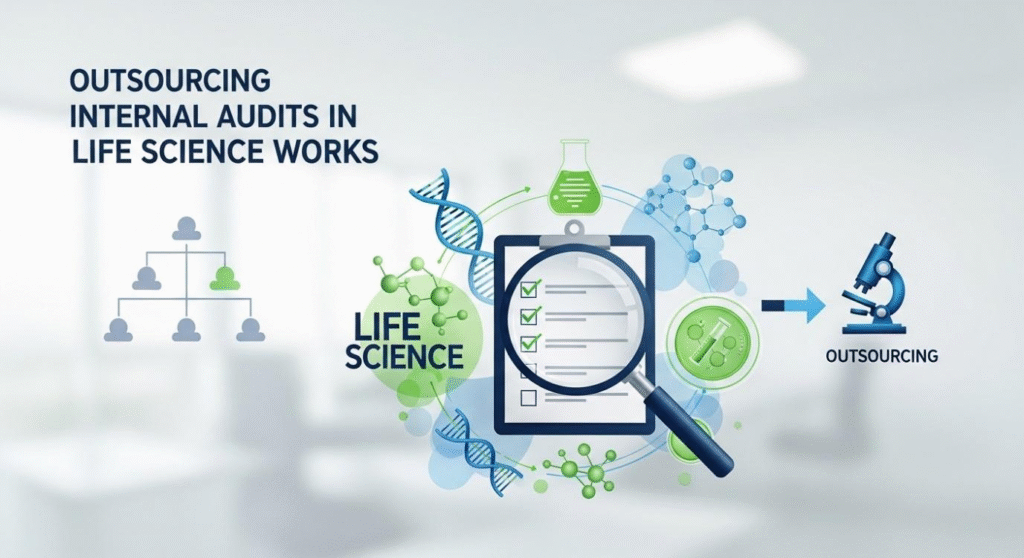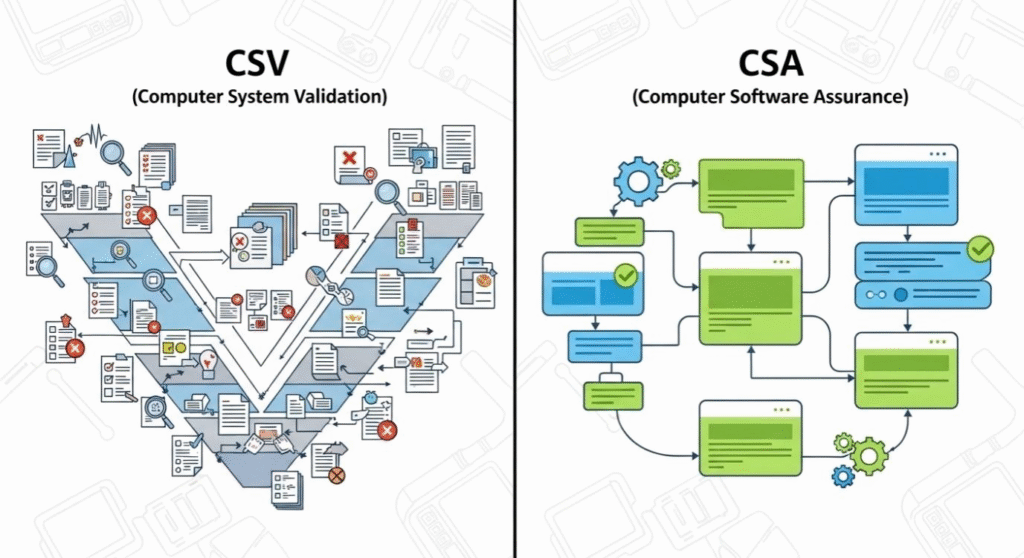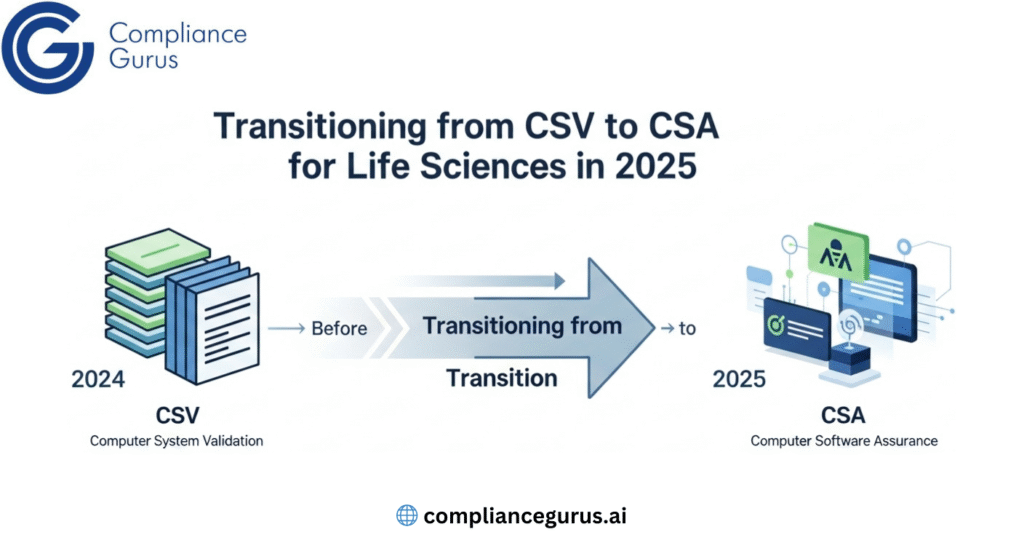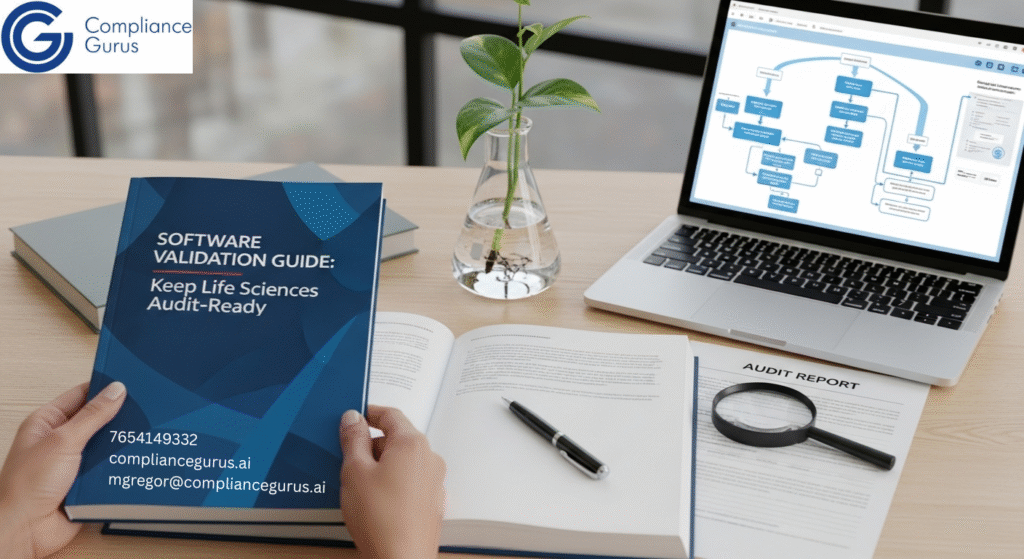Compliance done right clears the path for progress because confidence beats rework every time. That mindset sits at the heart of why many life sciences organizations now outsource internal audits: the work is precise, the risks are real, and the payoff is speed with control. When compliance auditing services are run by seasoned specialists who live in 21 CFR Part 11, CSV, and CSA, teams can reduce surprises, avoid avoidable remediation, and keep programs moving without second-guessing every control or test script.
Why Outsourcing Internal Audits in Life Science Works?
Internal teams carry product, quality, and IT workloads that grow with every new system, patch, and process change, which makes sustained audit depth hard to maintain across the entire GxP footprint. Outsourced audit partners bring purpose-built methods for vendor audits, CSV/CSA package reviews, and periodic reviews to help systems remain validated across the lifecycle, not just at go-live.

- Independent, risk-based testing focus ensures attention goes to functions that impact patient safety, product quality, and data integrity, consistent with the FDA’s CSA thinking.
- Faster readiness with fewer do-overs: experts recognize gaps quickly (e.g., signature controls, role-based access, audit trail validation, testing sufficiency) and map fixes into the SOP and validation stack.
21 CFR Part 11 At the Center
For FDA-regulated environments, 21 CFR Part 11 shapes how electronic records and signatures are controlled, reviewed, and trusted, which then sets what audits must confirm in GxP systems and processes. In practice, strong internal audits look at whether intended use is validated, controls are effective, and periodic reviews are keeping the application in a validated state across change and time.
- Vendor due diligence is not optional; FDA expects due care prior to selection and implementation, and auditors often find this step missed or rushed.
- Periodic reviews in life sciences IT compliance should confirm controls and documentation continue to meet 21 CFR Part 11 and that no drift has put the system out of its validated state.
CSV Vs. CSA: Aim the Effort Where Risk Lives
Computer System Validation (CSV) emphasizes documented evidence that a system fits its intended use, while Computer Software Assurance (CSA) applies a risk-based lens to focus effort where it matters most. Outsourced auditors with both CSV and CSA expertise help teams right-size testing and documentation, reduce low-value activities, and still meet regulatory expectations.

- Apply critical thinking to prioritize testing on medium-to-high risk features tied to patient safety, product quality, or data integrity; de-emphasize low-risk areas to streamline timelines.
- Validate across the lifecycle: from design and installation through operation and periodic review, with clear traceability to intended use and controls.
The Vendor Audit Most Teams Skip (But shouldn’t)
A common failure pattern: buying a GxP application without a vendor audit, then discovering key 21 CFR Part 11 gaps during implementation or late in validation, forcing rework and delays. An outsourced GxP compliance software vendor audit before selection surfaces issues like missing signature controls, weak audit trails, or heavy customization needs that change the cost of ownership and validation scope.
- Do not rely on vendor-supplied validation templates; many are not FDA-compliant and often need substantial rework by experienced validation teams, according to field experience with 21 CFR Part 11 vendors.
- If a purchase has already happened, conduct the vendor audit before implementing to define remediation and reduce downstream disruption.
Periodic Reviews: The Lifecycle Safety Net
Validated does not mean “validated forever.” Systems change, roles change, and integrations expand – so periodic reviews and compliance auditing services are essential to confirm the application still meets requirements and the controls still work as designed. Outsourcing periodic reviews helps smaller teams without in-house CSV/CSA SMEs stay aligned with 21 CFR Part 11 and reduce inspection findings.
- Practical targets include access models, audit trail behavior, change history, deviation/CAPA tie-ins, and reconciliation between SOPs, records, and actual use.
- Output should be an actionable plan (e.g., minor config changes, documentation updates, supplemental testing) rather than a shelf report.
What Good Outsourced Audits Look Like?
A useful audit delivers clarity, not just checkmarks. Expect a fit-for-purpose approach that connects findings to action and risk.
- Scope and plan that reflect intended use, regulatory touchpoints, and system risk profile (CSV/CSA aware).
- Evidence review covering design, installation, operation, security, and signature controls; tie-ins to SOPs and training.
- Findings mapped to impact and priority, with remediation paths that keep the system in a validated state.
Practical Signs That an Internal Audit Is Needed Now
- A new GxP application is being selected or implemented – especially ERP, QMS, LIMS, MES, LMS, DMS, or clinical systems in cloud (IaaS/PaaS/SaaS) environments.
- There’s been a significant change: major release, new integration, role redesign, or process rewrite; all can affect intended use and control fitness.
- No recent periodic review or recurring deviations suggest controls aren’t working as designed under 21 CFR Part 11.
Getting Started: A Simple Path
- Plan the vendor audit (or pre-implementation audit if already purchased) to surface 21 CFR Part 11 gaps and cost-of-ownership factors like needed customizations.
- Align CSV/CSA scope to risk, focusing on intended use and controls that guard patient safety, product quality, and data integrity; avoid low-value testing.
- Schedule periodic reviews to keep the application in a validated state across updates, integrations, and process changes.
A Quick Word on Tooling and Scope
Whether validating ERP/MRP, QMS, LIMS, MES, LMS, DMS, or clinical systems, expert teams should be fluent in on-prem and cloud (IaaS, PaaS, SaaS) models with providers like AWS, Azure, and GCP, and tailor evidence to intended use and control design for 21 CFR Part 11. This is equally true when considering controls like role-based access, electronic signatures, and audit trails across data flows and operational SOPs.
- The same lens supports responsible adoption of GxP compliance software in complex stacks while preserving traceability and lifecycle validation discipline.
- In regulated manufacturing contexts, disciplined approaches to GMP software validation keep systems aligned to intended use and inspection-ready across change.
Advanced Considerations
- Use GAMP 5 software categorization to help frame validation expectations by system type, then apply CSA risk thinking to right-size testing across categories and features.
- Ensure complete and reviewable audit trail validation – audit trails must reliably capture creation, modification, and deletion to support data integrity and inspection confidence.
The Payoff
Outsourcing internal audits gives regulated teams a double win: deeper assurance with less internal drag, and a clearer runway for releases and improvements that truly matter to patients and quality outcomes. With vendor due diligence, periodic reviews, and risk-based CSV/CSA baked in, compliance becomes a force multiplier, not a bottleneck.
Before You Go
Great science and solid systems go farther together. If it’s time to lift the audit burden, sharpen 21 CFR Part 11 readiness, or validate a new cloud-based GxP stack, partnering with specialists like Compliance Gurus for compliance auditing services and life sciences IT compliance can make all the difference and protect momentum when the stakes are high.
To explore how expert-led audits, package assessments, and lifecycle reviews can streamline the next phase, reach out to schedule a short discovery call and align scope to goals.








